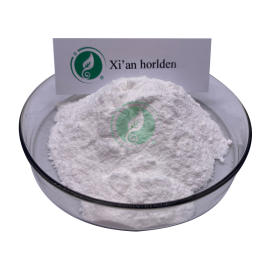The model diagram of the anti-fusarium wilt mechanism of the xylem of the millennium tung root
The model diagram of the anti-fusarium wilt mechanism of the xylem of the millennium tung root Recently, the characteristic forest resource breeding and cultivation innovation team of the Institute of Subtropical Forestry of the Chinese Academy of Forestry used Fusarium wilt resistant millennium wilt as materials to excavate and identify new fusarium wilt resistance genes and their mechanisms, which are the anti-fusarium wilt mechanism of tung oil and other plants And resistance breeding provides ideas
Recently, the characteristic forest resource breeding and cultivation innovation team of the Institute of Subtropical Forestry of the Chinese Academy of Forestry used Fusarium wilt resistant millennium wilt as materials to excavate and identify new fusarium wilt resistance genes and their mechanisms, which are the anti-fusarium wilt mechanism of tung oil and other plants And resistance breeding provides ideas
Fusarium wilt According to Wang Yangdong, the corresponding author of the paper and a researcher at the Institute of Subtropical Forestry of the Chinese Academy of Forestry, Fusarium wilt is one of the ten major fungal diseases of plants, and more than 100 plant species have been reported to have fusarium wilt
Tung oil is an oil tree species and strategic resource native to China, and the tung oil produced by it is one of the best plant dry oils
At present, tung wilt disease has spread in more than 90 counties and cities in 8 provinces in the south of the country, and more than 60% of the tung oil forests in the country have outbreaks of fusarium wilt to varying degrees
"The incidence of millennium tungsten in the same genus as the three-year tungsten is extremely low, but its growth is slow and the quality of tung oil is inferior
However, if we want to completely control plant fusarium wilt, we must understand the mechanism of plant resistance to fusarium wilt
Thousand-year tongs stop pathogenic bacteria on the phloem
Thousand-year tongs stop pathogenic bacteria on the phloem The team has carried out resistance and quality breeding for a long time around southern characteristic forest resources.
Zhang Qiyan, the first author of the paper and a PhD student from the Institute of Subtropical Forestry of the Chinese Academy of Forestry, introduced that through electron microscopy, they found that the pathogen Fof-1 can penetrate the cortex of tung lateral roots for three years and infect the phloem and xylem laterally.
However, in the millennium tong, the pathogen can only spread to the phloem of the lateral root, and cannot infect the xylem of the lateral root, thus blocking the transmission to the above-ground part
Comparative transcriptome analysis found that VmD6PKL2 is the key disease resistance gene
After the pathogen infection, the expression of VfD6PKL2 of Tungaria vulgaris remained at a low level for three years, while VmD6PKL2 of Tungaria vulgaris showed a trend of first increasing and then decreasing, indicating that VmD6PKL2 of Tungaria vulgaris could respond to the infection of Fusarium wilt pathogen
Reveal the mechanism of disease resistance
Reveal the mechanism of disease resistance In order to understand the reasons for the above phenomenon, the team conducted a series of studies
The results showed that compared with wild-type Arabidopsis, homozygous mutants were more sensitive to Fusarium wilt infection, and Arabidopsis overexpressing VmD6PKL2 had an increased resistance to fusarium wilt
Further experiments found that VmD6PKL2 could interact with VmSYT3, a negative regulator of Fusarium wilt.
The results of the study showed that VmD6PKL2 in the xylem of the roots of the millennium paulownia played an anti-fusarium wilt effect by inhibiting the expression of the negative regulator VmSYT3
.
This study used the anti-fusarium wilt material Thousand-year wilt to reveal the defense effect of lateral root xylem against the pathogen of Fusarium wilt for the first time at the tissue level, cell, cellular level, and molecular level.
It also discovered for the first time that the specific and highly expressed gene VmD6PKL2 of the lateral root xylem was resistant to fusarium wilt.
The mechanism proves that the overexpression of VmD6PKL2 can enhance the resistance of plants such as Arabidopsis thaliana and tung oil to fusarium wilt
.
The results of the study provide a new perspective for studying the mechanism of plant resistance to Fusarium wilt, and provide a new idea for molecular breeding of Tung oil and other plants for resistance to Fusarium wilt
.
This research was funded by the National Natural Science Foundation of China and the Zhejiang Provincial Major Breeding Project
.
(Source: China Science News Li Chen Yang Yingying)
Related paper information: https://doi.
org/10.
1038/s41438-021-00656-2
https://doi.
org/10.
1038/s41438-021-00656-2
This article is an English version of an article which is originally in the Chinese language on echemi.com and is provided for information purposes only.
This website makes no representation or warranty of any kind, either expressed or implied, as to the accuracy, completeness ownership or reliability of
the article or any translations thereof. If you have any concerns or complaints relating to the article, please send an email, providing a detailed
description of the concern or complaint, to
service@echemi.com. A staff member will contact you within 5 working days. Once verified, infringing content
will be removed immediately.







